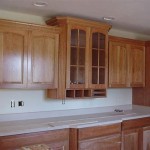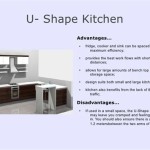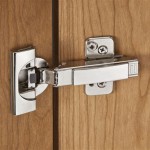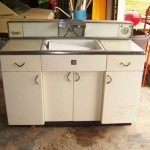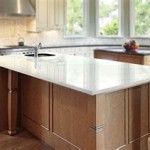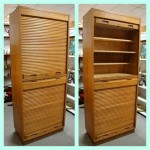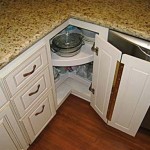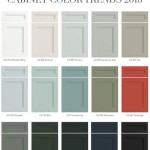Kitchen Cabinet Choices: A Comprehensive Guide
The kitchen often serves as the functional and aesthetic heart of a home. As such, careful consideration should be given to each element within the space, and kitchen cabinets stand as a particularly important element. They contribute significantly to both the overall style and the practicality of the room. Choosing the right kitchen cabinets involves navigating a range of options related to materials, styles, construction methods, and finishes. This article provides a detailed exploration of the various factors to consider when selecting kitchen cabinets.
Understanding Cabinet Construction Types
The way a cabinet is constructed significantly influences its durability, appearance, and cost. There are three primary cabinet construction types: stock, semi-custom, and custom.
Stock cabinets are pre-made cabinets available in standard sizes and limited styles. They represent the most affordable option and are typically readily available in most home improvement stores. Due to their standardized dimensions, stock cabinets are suitable for kitchens with straightforward layouts. However, their limited customization options might not be appropriate for unusually shaped spaces or homeowners with specific design preferences.
Semi-custom cabinets offer a balance between affordability and personalization. While still based on standard sizes, semi-custom cabinets provide a wider range of styles, finishes, and modifications compared to stock cabinets. This allows for some tailoring to fit your kitchen’s dimensions and aesthetic vision. Common modifications include adjusting cabinet depth, adding decorative elements, or selecting specialized hardware. Lead times for semi-custom cabinets are generally longer than those for stock cabinets, as they are made to order.
Custom cabinets represent the highest level of personalization and are built to exact specifications. These cabinets offer unlimited design freedom, allowing homeowners to create unique storage solutions tailored to their kitchen's specific layout and their individual needs. Custom cabinets often feature high-quality materials and superior craftsmanship, reflecting the investment. The process typically involves working closely with a cabinet maker or designer to create detailed plans, select materials, and oversee the construction process. Naturally, custom cabinets come with the highest price tag and longest lead times.
Exploring Cabinet Materials
The material used to construct kitchen cabinets is a crucial factor that affects both their longevity and appearance. Common cabinet materials include solid wood, plywood, particleboard, medium-density fiberboard (MDF), and stainless steel.
Solid wood is a classic choice known for its natural beauty and durability. Different wood species, such as maple, oak, cherry, and walnut, offer varying grains, colors, and hardness levels. Solid wood is generally more expensive than other materials and can be susceptible to changes in humidity, which can cause warping or cracking if not properly sealed and maintained. Solid wood is typically used for cabinet faces and doors, while the cabinet boxes themselves might be constructed from plywood or MDF for stability.
Plywood is an engineered wood product made from layers of wood veneers glued together. It offers excellent strength and stability, making it a suitable choice for cabinet boxes. Plywood is less prone to warping than solid wood and can withstand moisture relatively well, especially when treated. It provides a good balance of quality and affordability.
Particleboard is another engineered wood product composed of wood chips and resin. It is a cost-effective option, but it is less durable and more susceptible to moisture damage than solid wood or plywood. Particleboard is commonly used for the interior components of cabinets, such as shelves, but it is generally not recommended for areas that will be exposed to water or heavy use.
Medium-density fiberboard (MDF) is an engineered wood product made from wood fibers and resin. MDF has a smooth, consistent surface, making it an ideal substrate for painting or applying veneers. It is more stable than solid wood and less prone to expansion and contraction due to humidity changes. MDF is often used for cabinet doors and drawer fronts, as it can be easily shaped and molded.
Stainless steel is a durable and hygienic material often used in commercial kitchens. It is resistant to corrosion, easy to clean, and provides a modern, industrial aesthetic. Stainless steel cabinets are typically more expensive than wood or wood-based alternatives, and they may show fingerprints and scratches more readily.
Analyzing Cabinet Styles and Finishes
The style of your kitchen cabinets contributes significantly to the overall design aesthetic of the space. Common cabinet styles include traditional, contemporary, transitional, and shaker.
Traditional cabinets often feature ornate details, raised panel doors, and decorative moldings. They are typically made from wood species like cherry or maple and finished with a stain or glaze to highlight the wood's natural grain. Traditional cabinets evoke a sense of elegance and formality.
Contemporary cabinets are characterized by clean lines, minimalist designs, and a focus on functionality. They often feature slab doors or flat panel doors and are typically finished with a high-gloss lacquer, laminate, or stainless steel. Contemporary cabinets create a sleek and modern look.
Transitional cabinets blend elements of both traditional and contemporary styles. They often feature simple shaker-style doors with a neutral color palette and clean hardware. Transitional cabinets offer a versatile and timeless aesthetic that can complement a variety of kitchen designs.
Shaker cabinets are defined by their simple, clean lines and recessed panel doors. They are typically made from wood and finished with paint, often in neutral colors like white, gray, or beige. Shaker cabinets are a versatile choice that works well in both traditional and contemporary kitchens.
The finish applied to kitchen cabinets significantly affects their appearance and durability. Common cabinet finishes include paint, stain, laminate, and veneer.
Paint provides a smooth, opaque finish that can be customized to match any color scheme. Painted cabinets are relatively easy to clean and maintain, but they may chip or scratch over time. High-quality paint and proper preparation are essential for a durable and long-lasting finish.
Stain penetrates the wood and highlights its natural grain and texture. Stained cabinets offer a warm and inviting look, but they can be more challenging to clean than painted cabinets. The choice of stain color can dramatically alter the overall look of the wood.
Laminate is a synthetic material applied to a substrate, such as particleboard or MDF. Laminate cabinets are durable, easy to clean, and resistant to scratches and stains. They are available in a wide range of colors and patterns, including wood-grain options. However, laminate cabinets may not have the same depth and richness as solid wood or veneer.
Veneer is a thin layer of real wood applied to a substrate, such as plywood or MDF. Veneer cabinets offer the look and feel of solid wood at a lower cost. They are available in various wood species and can be stained or finished to match your desired aesthetic. However, veneer cabinets may be more susceptible to damage than solid wood cabinets.
Considering Storage and Functionality
Beyond aesthetics, the functionality of your kitchen cabinets is paramount. Effective kitchen cabinet design maximizes storage space and improves workflow within the kitchen. Consider incorporating features such as pull-out shelves, drawer dividers, and spice racks to optimize organization.
Pull-out shelves allow for easy access to items stored in the back of cabinets, eliminating the need to reach and rummage. They are particularly useful for storing pots, pans, and other large items.
Drawer dividers help to keep utensils, cutlery, and other small items neatly organized in drawers. They prevent items from shifting and becoming disorganized.
Spice racks provide a convenient way to store and access spices. They can be mounted on cabinet doors, walls, or inside drawers.
Corner cabinets often present a storage challenge. Consider using lazy Susans or pull-out corner shelves to maximize the use of these spaces.
Tall pantry cabinets provide ample storage for food items and kitchen supplies. They can be customized with adjustable shelves and pull-out drawers to accommodate different storage needs.
Cabinet hardware, such as knobs and pulls, can significantly impact the overall look and feel of your kitchen. Choose hardware that complements the style of your cabinets and provides a comfortable grip. Consider the finish and durability of the hardware when making your selection.
Proper lighting is essential for both functionality and aesthetics in the kitchen. Consider installing under-cabinet lighting to illuminate countertops and work surfaces. Interior cabinet lighting can also be helpful for locating items stored inside cabinets.
The kitchen sink base cabinet requires special attention due to its exposure to moisture. Choose a cabinet constructed from water-resistant materials and consider adding a drip tray to protect the cabinet from leaks.
The placement of kitchen cabinets should be carefully planned to optimize workflow and accessibility. Consider the proximity of appliances and the location of work zones when determining the layout of your cabinets.
Finally, it is important to establish a budget for your kitchen cabinet project. Cabinet costs can vary widely depending on the materials, construction type, style, and features selected. Researching different options and obtaining multiple quotes can help ensure that you get the best value for your money.

The Most Popular Styles And Cabinet Choices In Kitchen Remodels

Kitchen Cabinet Choices

Kitchen Cabinet Choices

How To Choose Kitchen Cabinet Color Awa Cabinets

3 Popular Cabinet Door Choices To Pair With Kitchen Refacing

Top Styles And Cabinet Choices For Remodeled Kitchens

Sorting Through Kitchen Cabinet Choices

Cabinet Colors Choices 3 Day Kitchen Bath Custom Cabinets Refacing Door Styles

Your Guide To Choosing Kitchen Cabinets

Cabinet Wood Types For Kitchen Capitol Kitchens And Baths
Related Posts

